
by Vincent R. Pozon
Navigating the waters of false accusations
When you are accused of a falsehood in public, there will be a period of bewilderment. You do not know the whole story, you hear bits and pieces, from the concerned and the malicious. While you are determining precisely what the accusation is, where it is being made, by whom, time is ticking away, time that can determine the lifespan of the crisis and the damage it can cause.
Before you can decide on the necessity or even the nature of your response, you will need to know if there is more to the story, if this is a campaign commissioned by your enemies. It may be best to refrain from responding immediately or, sometimes, at all.
The point of when to respond is crucial
As a general prescription from a communications perspective, you do not let wounds fester, you do not allow the perception to become reality. But there is a conflicting caveat, that you do not magnify what is not there. You do not exacerbate the situation by responding disproportionately or dramatizing what has not become an issue to the public at large.
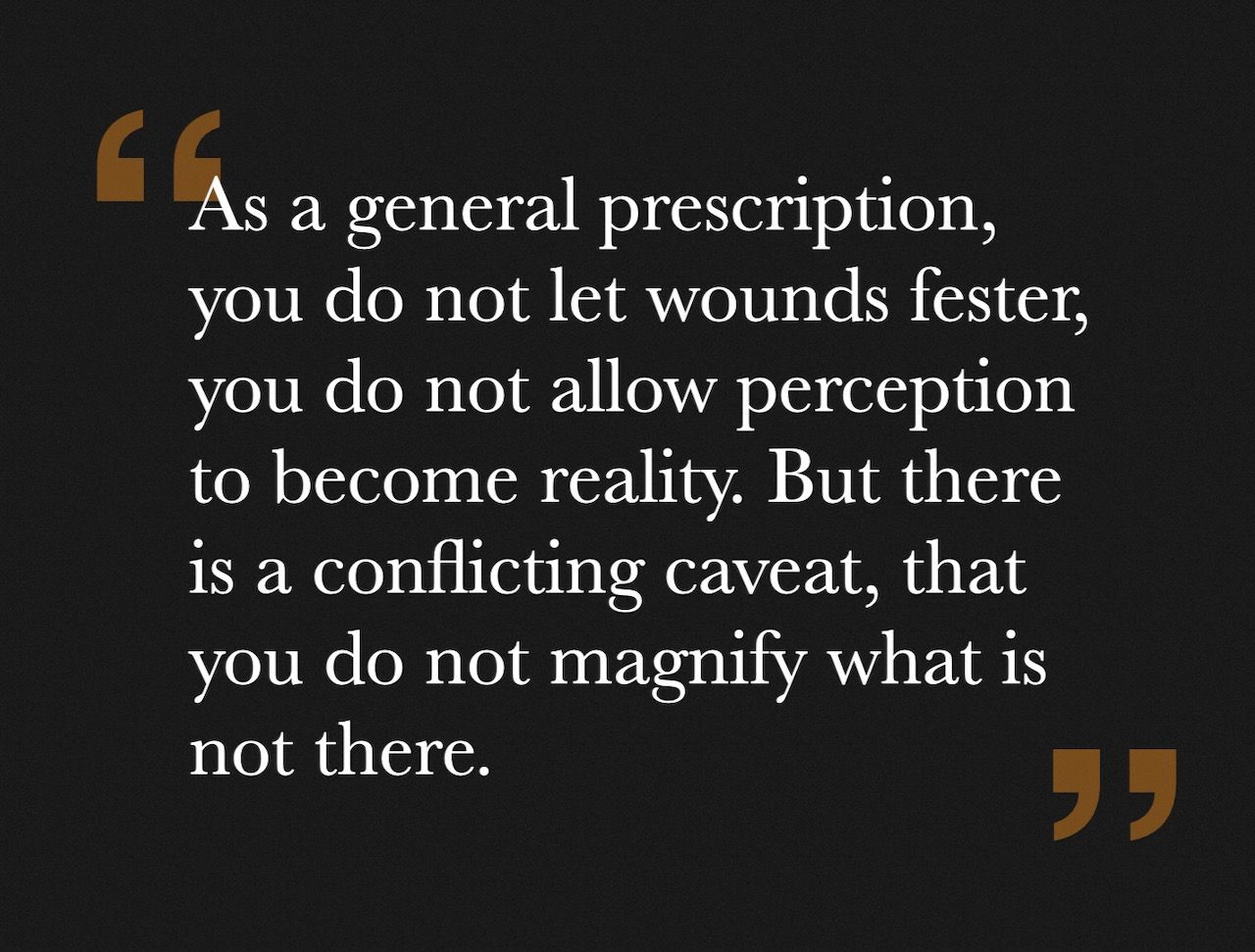
So when do you respond? Well, there's Science
There are tools that help. It's called Social Listening. We run analytics on social data, then we process it for sentiments and check trends. The point of when to deny or defend oneself in public, when to comment on negative posts, what to say, how to respond are decisions that come after an actual count and review of all posts, articles and comments. It depends on the level of noise, or how caustic it is; the color of the noise, for while it is talked about, not all that is said is damaging or negative; the distribution level, or how many people circulate it and if it has reached legacy media; and the authenticity of the sources sharing. Are they trolls commissioned to share, paid blogs and YouTube channels? More importantly, are they getting anywhere?
How to respond when the noise demands a response
The weakest, though the base of all responses, is a denial. There is a short window for denial, after which attempts are questionable. The public seldom suspects the accusation, for it is first received as news and given the benefit of the doubt. If the subject of the accusation is a politician, there is the factor called 'implicit prejudice'. Politicians are ante mano guilty, a bias caused by generations of lawbreaking.
The public suspects the motives of deniers, that they are commissioned, or colored by party affiliations.
In the world of social media, you can question, attack, vilify or sue the accuser or source of negative posts, but it is the public that is more important than the author of the malice. The public's interest and understanding matter more. Hopefully, they are not even interested; many malicious campaigners know of instances when they could not ruffle the public enough.
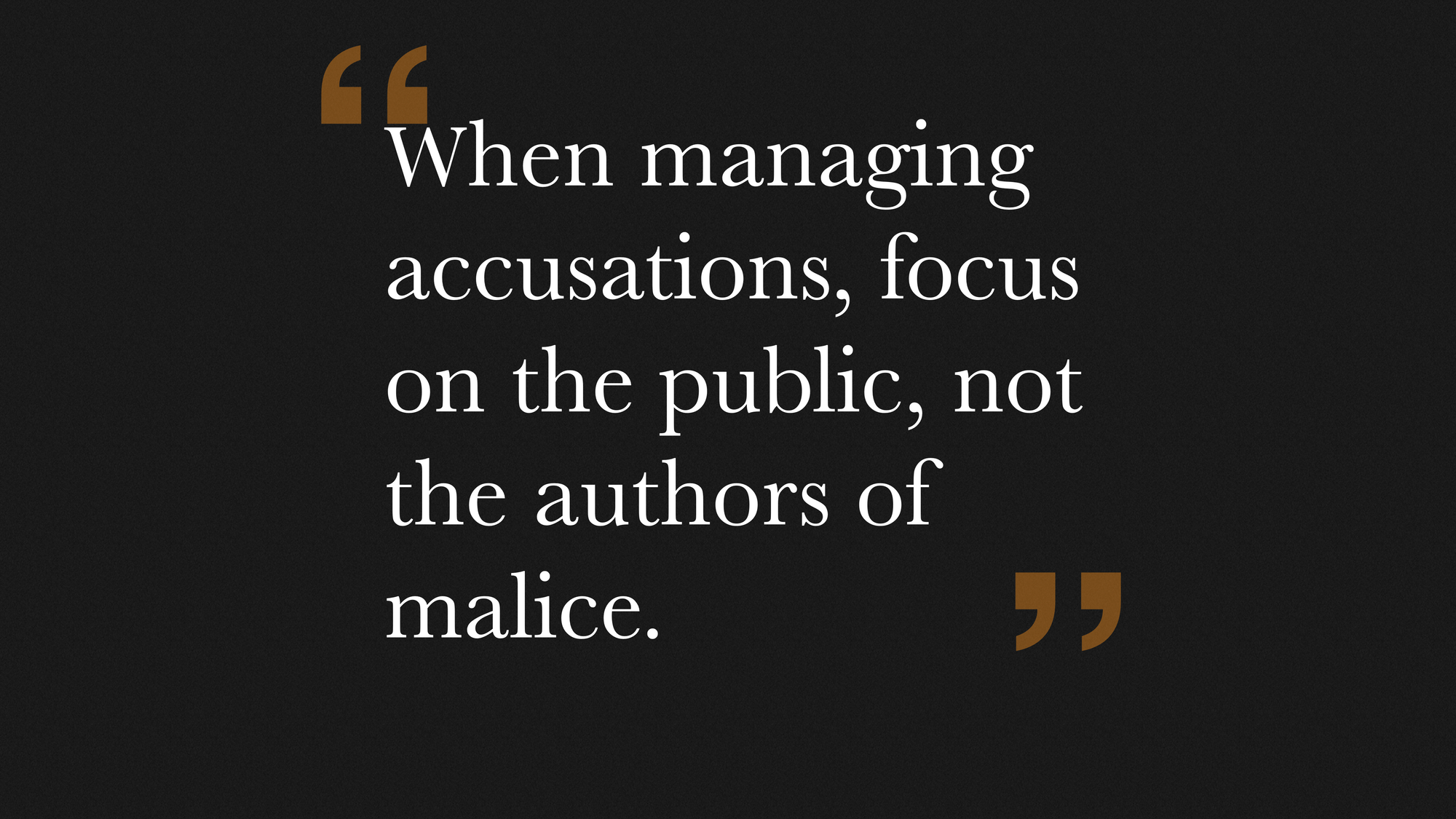
When the metrics say deny, deny and quickly.
Millions have been swayed by smear campaigns against Vice President Leni Robredo, and many were also convinced that Senator Risa Hontiveros misused Philhealth funds. To this day, the generally accepted belief regarding the Plaza Miranda bombing was that it was Marcos who had grenades lobbed at the senators. None of the accusations are true.
The culprit why a scuttlebutt is allowed to become scripture is naiveté. Leni Robredo realized too late that not minding the vicious storm on social media was unwise.
“Kasi noong una parang masyado rin kaming naive na inisip na makakatulong kapag modest ka all the way, pero ang problema nauunaahan ka ng propaganda.”
- VP Leni Robredo.
What the Robredo camp was subjected to, the scale of the attacks, which included circulation of a fake lewd video of the candidate's daughter, was "gutter politics at its lowest”, says Ronnie Holmes, president of the polling firm Pulse Asia. The attempt to smear the Robredo family is "a new low."
Unfortunately, denials, when remarkably late, become futile, and cannot clean up the mess.
"Joey Salgado, who knows whereof he speaks regarding crisis management, says delays can be caused by how the decisions are made internally. "Too democratic and loose, or too centralized, may plus and minus. Or baka may desisyon na, mali ang execution.
"And then there's that other factor: too incompetent."
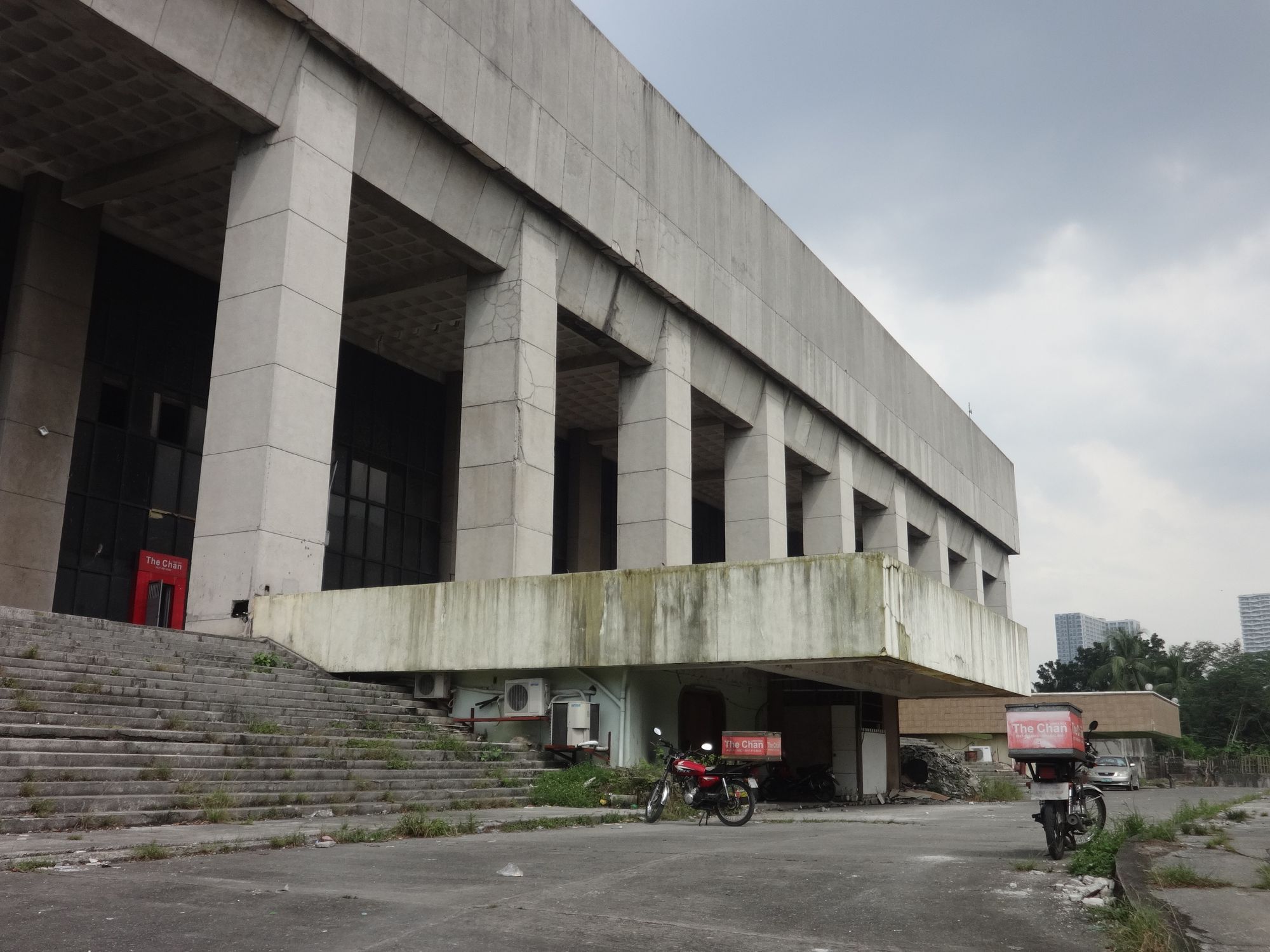
The Manila Film Center Tragedy: An Eyewitness
It is writ as fact in newspapers: "the burial of over a hundred construction workers in quick-drying cement, when a top floor collapsed on them in the tight deadline for a Manila Film Center hastily built for the opening of the first Manila International Film Festival in 1982" Daily Inquirer 06/10/2007
Max Soliven had this in his column, now archived: “In the haste to roof the building, the roof struts and supports proved infirm, and in the stage of completion the entire roof and scaffolding collapsed, hurling the laborers on top down to their deaths and crushing and suffocating those below in wet cement. This tragedy occurred on November 17, 1980. Some 169 workers were said to have died – but the remains of most of them were never recovered. Presumably they lie there, under the floor which was cemented over – and the building was inaugurated 'on time' for the Film Festival."
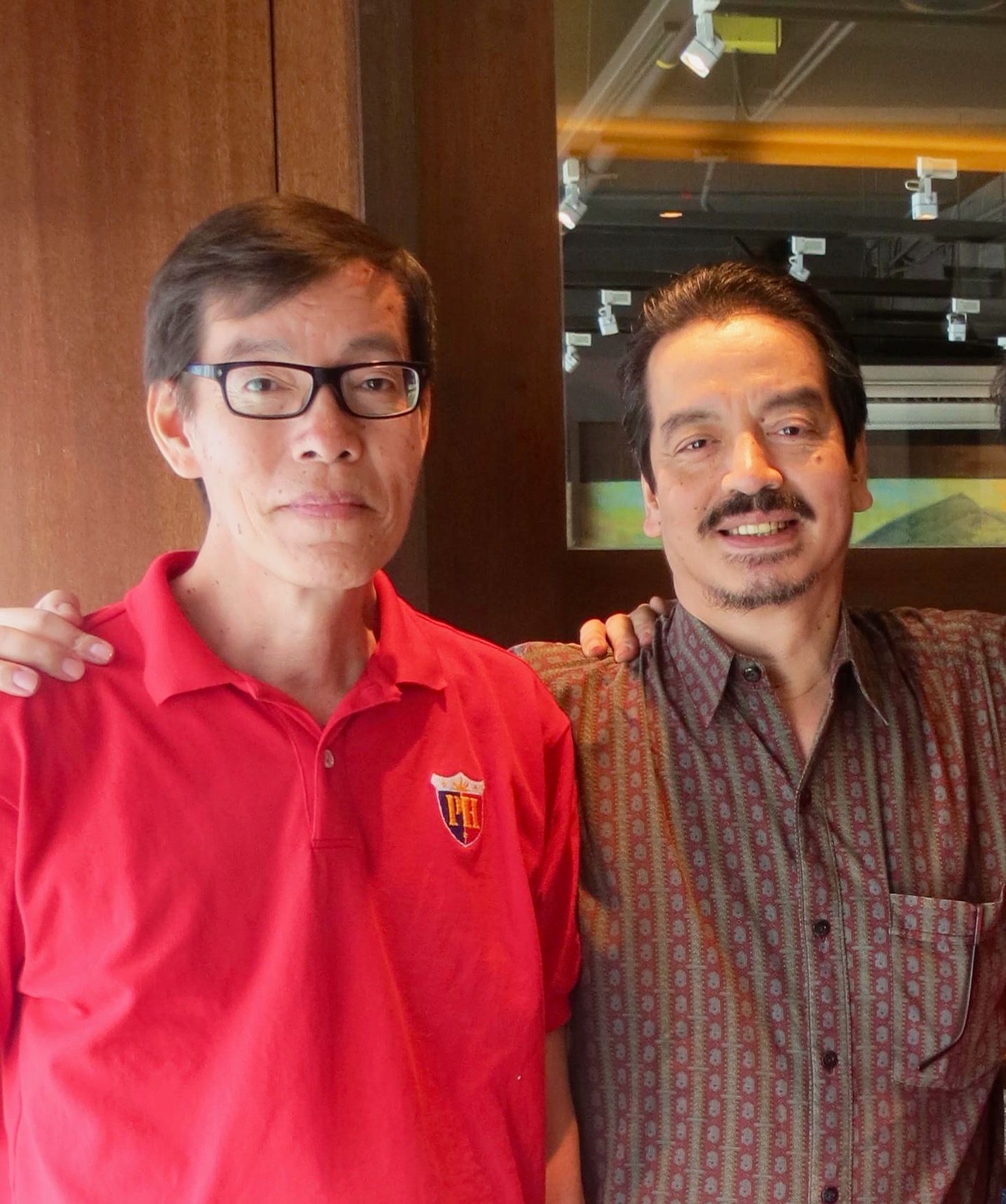

Early last year, I remembered that my brother was there when it happened. I asked what he knew of the tragedy. And this was our exchange.
“I was working with the general contractor of the Film Center, Wecon. Yes, I was there because the owner wanted me to oversee the concrete mixers and the pumps. When we were about to finish pouring that early morning, I went down to stop the additional mixers since we already had enough on site. One flight before reaching the ground floor, I heard a loud boom. I got scared and ran to my project manager. We checked what happened and saw that the slab of the entire 4th floor we were pouring on collapsed. The scaffoldings gave way and we were hearing a lot of workers crying for help. . . We were able to clear all the debris of everything that collapsed.”
“How many died? How many were buried?”
“No one was buried. 8 workers died in the accident.”
"Mayroon daw barracks under.”
“Wala nang barracks under kasi fully covered with concrete na ang ground floor. Ang binubuhusan namin was the 4th floor with 2 mini theaters over the main theater of the ground floor.”
“So not true, that they just buried them with concrete?"
He added, with eyewitness authority:
“Wala talagang buried with concrete. Gawa gawa lang ng press na pumasok sa site that morning na bumagsak.”
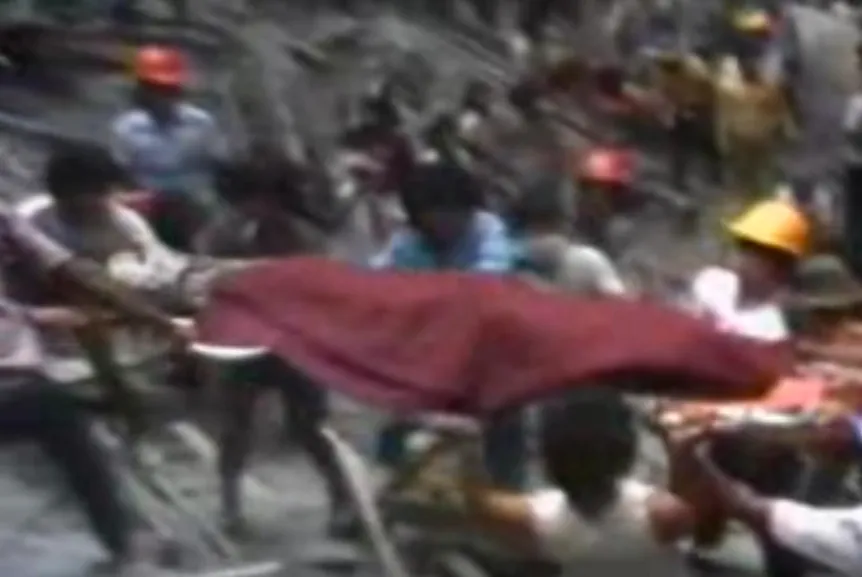
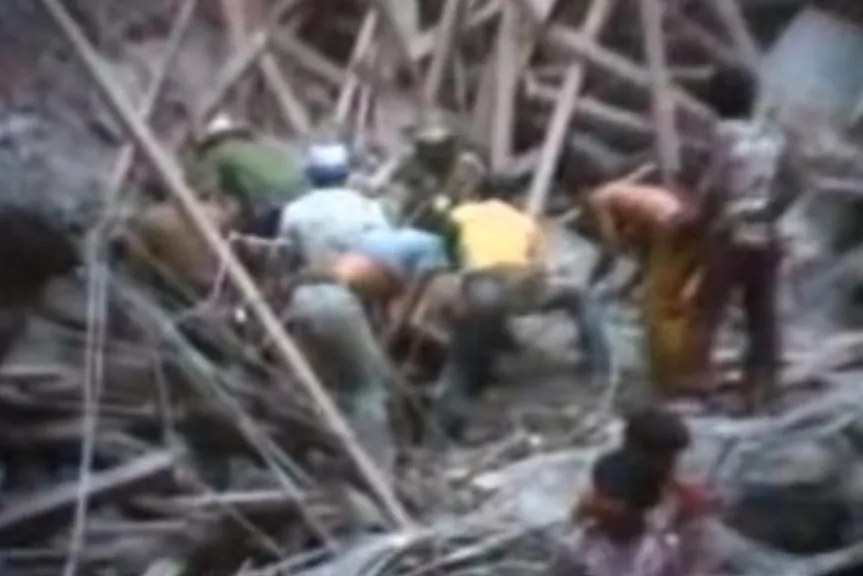
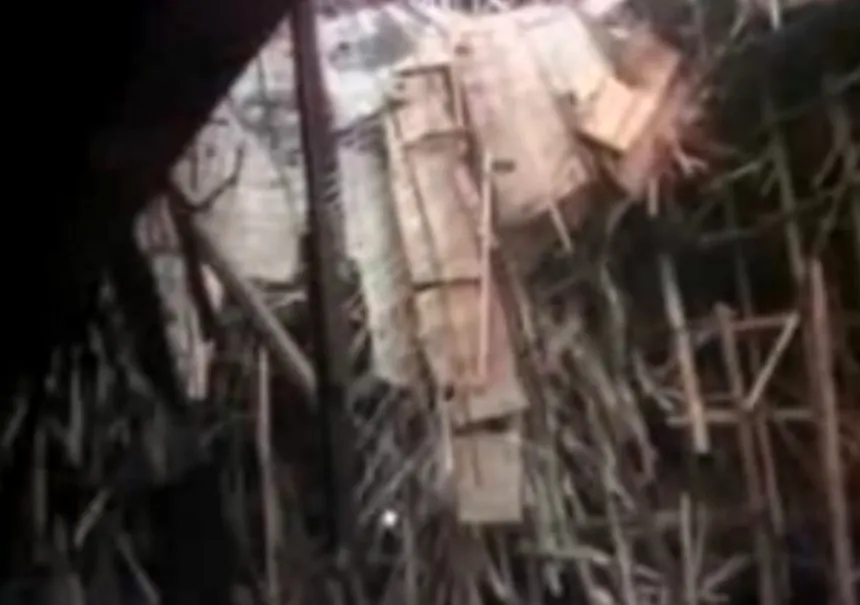
Baltazar N. Endriga, former president of the Cultural Center of the Philippines, confirmed this in a letter to the Philippine Daily Inquirer asking for a correction of a news report. He counts seven deaths, by the way, not eight.
"I decided to personally talk to the architect of the project, Dr. Froilan Hong, of the University of the Philippines. Dr. Hong brought with him the detailed architectural plans of the Manila Film Center. He then explained to me how the 'accident' that caused the death of 'seven' construction workers happened. He explained that the scaffolding supporting the platform into which concrete was being poured collapsed and the seven workers fell to their deaths. The bodies of all seven were then retrieved and given the proper rites befitting the dead. He belied the popular story that many workers were buried alive in concrete and that in the hurry to finish the construction, they were simply entombed under the Film Center’s bowels. 'There is no truth to such stories,' Dr. Hong stated categorically".
Last year, Rappler corrected an article on the matter: "An earlier version of this story mentioned that 169 construction workers died and got buried in the construction site, based on a veteran journalist’s newspaper column. We have since removed any reference to it. Historians say the number of those who died is disputed to this day, as there have been no incident reports or testimonies that could establish a definitive count."
The author of this article is not a supporter of the Marcoses, to put it mildly. But when the incident is investigated sans politically-tinted glasses, it does appear that accounts of bodies being buried are not supported. Lino Brocka claimed it as fact in Signed: Lino Brocka, a documentary on film making during those dark days, and the claim of a prominent person is powerful. Lately, I've observed that news articles and social media posts about the tragedy are being archived or taken down.
Rhea Tomas Tumanan writes in her blog "Behind the Story of the Manila Film Festival”:
"The project’s contractor, Eliodoro, did agree to be interviewed... Asked about what happened to the workers who died during the incident, Ponio replies, 'Kahit na kuko walang nakabaon doon, maniwala ka. Kung ako may kamag-anak dyan kahit na kakilala lang siguro, I would never allow that to happen, kukunin at kukunin ko yun. Dedemanda ko yung people who are responsible. Can you imagine ililibing mo dun ang tao? That’s why I saw to it that all workers who died were buried honorably.”
She mentions also that "I-Witness did not find any family who claims they have a relative who was left buried underneath the Manila Film Center nor did they find anyone who is still looking for someone missing since that tragedy."

In a deep dive into archives, ChatGPT found that the tragedy at the Film Center received significant international coverage, The New York Times, Los Angeles Times, and The Washington Post included. A.I. found no mention of the burial of bodies.
My brother died in November of last year. Vernon went home to the Father, the Father who saved him at the collapse of that scaffolding at the Manila Film Center. Many, I am sure, rejected his testimony, as they did other similar testimonies, holding on to the previous belief, however incredulous it may seem today. When you think about it, would Mrs. Marcos have concrete poured over the dead when the world's media was peering into the shell of the Film Center, and then invite the world's glitterati -- 300 guests, including George Hamilton, Peter Ustinov, and Priscilla Presley -- to traipse about in glamorous attire on a floor that was supposedly already the lid of a mausoleum?
Finally, the question is not whether it is real, but rather whether the conversion of a rumor into this reality could have been prevented. That the perception helped bring about the end of the regime and those dark days is another matter, of course.
After a year of college, Koyang entered advertising, and there he stayed for half a century, in various agencies, multinational and local. He is known for aberrant strategic successes (e.g., Clusivol’s ‘Bawal Magkasakit’, Promil’s ‘The Gifted Child’, RiteMED’s ‘May RiteMED ba nito?”). He is chairman of Estima, an ad agency dedicated to helping local industrialists, causes and candidates. He is co-founder and counselor for advertising, public relations, and crisis management of Caucus, Inc., a multi-discipline consultancy firm. He can be reached through vpozon@me.com.
If you liked what you just read and want more of Our Brew, subscribe to get notified. Just enter your email below.


Related Posts
What We Get Wrong About This Strange Thing We Call Advertising
Jul 02, 2025
The Party as a Person: The Story of ‘Pag Mahal Mo, Akbayan Mo’
May 16, 2025
Frequently-Asked Questions About Advertising – Part VII
Apr 11, 2025